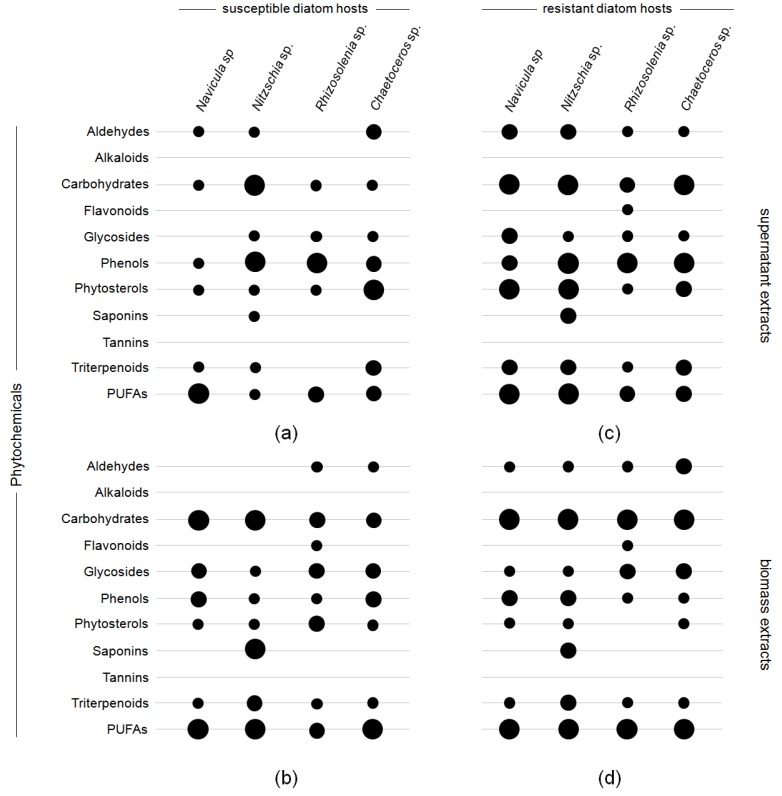Figure 2.
Results of the phytochemical screening of infection susceptible (a,b) and unsusceptible diatom hosts ((c,d) Navicula sp., Nitzschia sp., Rhizosolenia sp. and Chaetoceros sp.) in a non-contact-co-culturing approach using parasite-host tandem cultures (Chytridium sp. vs. Navicula sp., Rhizophydium sp. type I vs. Nitzschia sp. vs. Rhizophydium sp. type IIa vs. Rhizosolenia sp. and Rhizophydium sp. type IIb vs. Chaetoceros sp.) as trigger for the accumulation of potential defense molecules. Considered were aldehydes, alkaloids, carbohydrates, flavonoids, glycosides, phenols, phytosterols, saponins, tannins, triterpenoids, and PUFAs (pooled evaporated ethanolic, methanolic, and n-hexanic extracts re-dissolved in 100 mL aqueous EtOH (40%); n = 6), distinguishing weak (small circles), middle (medium circles), and strong colorimetric responses (large circles) with the exception of the test for saponins. (a,c) describes the effects of supernatant extracts; (b,d) those of biomass extracts. For details of the conducted tests, see Table 4.

